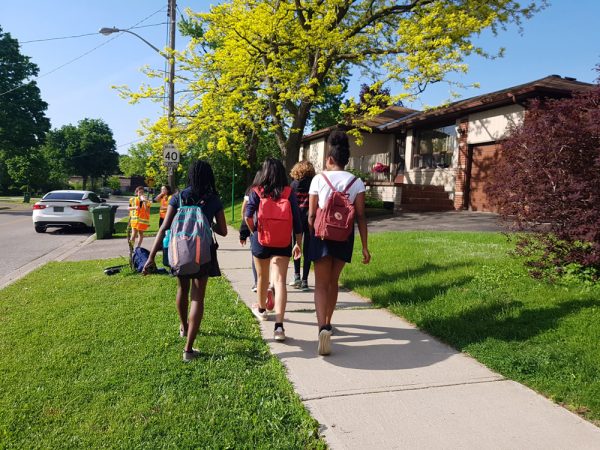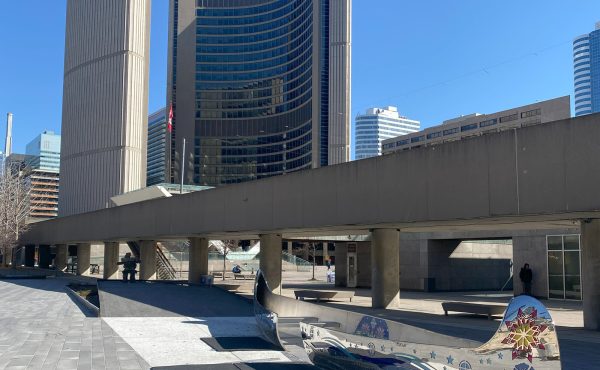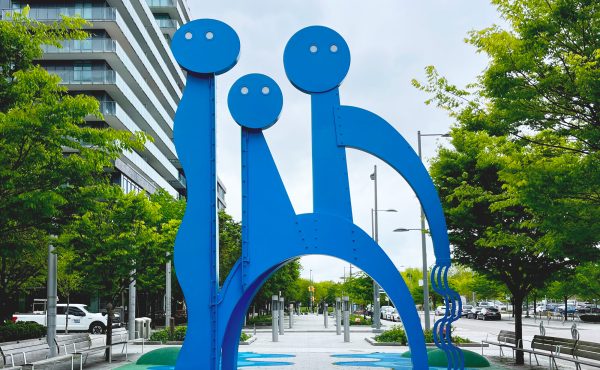This guest post from Armi de Francia, School Travel Planning Facilitator at Green Communities Canada, marks the beginning of October, International Walk To School Month (“Walktober”).
Walking to school (including walking with a mobility aid device) is more powerful than most people realize. It makes a difference, whether it happens a few times in the school year, one or more days each week, or every day.
Even walking part of the route can be beneficial: getting dropped off at a friend’s place who lives near the school, getting out at an earlier bus stop or subway station, walking to a more distant bus stop or subway station, or parking a little further away from school.
And it’s not just the numerous health and environmental benefits to consider (though those are great reasons!). Here are three impactful reasons for students of all ages to walk to school more, whether it’s all the way or part of the way:
Community Cohesion
Growing up in Scarborough, my mother would organize annual barbecues to get to know the neighbours and their children so that my brother and I could walk to school. I remember seeing my neighbours walk to school with their families and other neighbourhood children. Sometimes I would walk with them too, though usually I would walk home from school with other students living nearby. Walking allowed us to get to know each other outside of school hours, explore the neighbourhood, and develop a greater connection to the community.
Now, as a School Travel Planner, I work with school communities in various parts of Toronto and Ajax to promote and enable active transportation. Often this involves events celebrating walking and wheeling where families get to know each other. Event activities such as sticker giveaways and encouragement (sometimes cheering) spark more conversations. Sometimes parents chat with other parents, and school staff over hot chocolate or coffee provided at the school. Sometimes we take selfies with Walk to School signs. Walking allows for more people to interact with each other before (or after) reaching the school, while the event activities are a great way of welcoming students and making them feel a greater sense of belonging to the community.
Civic Participation
Walking better enables students to take part in their community. Some things can only be understood through the perspective, knowledge, and lived experiences of the students who reside and walk in the neighbourhood. I’ve worked with schools where students took leadership in encouraging their community to walk to school by sharing their stories.
Among these schools, my most memorable experience was with students in a disadvantaged neighbourhood located in downtown Toronto. We did two walkabouts with a few grade 5-6 students who provided insight that none of the school staff was aware of. Despite the bike lanes, laneways, and greenery, students expressed the discomfort they felt on the routes to school because of people screaming and breaking glass, litter attracting pigeons, concerns with stranger danger, and other challenges.
We then arranged to have these students present their findings to City Planning staff, a social housing provider, and the councillors (the school is in one ward while most of its catchment area is in another ward). The students chose the presentation structure and content of the presentation while I helped them create the PowerPoint slides. During the presentation, I explained the context then called on each student to share their experiences. I’ll never forget the look of astonishment in the audience. These professionals and decision makers commended the students for being very well spoken and gave City of Toronto pins to them as a token of appreciation. They addressed some of the maintenance issues and considered students’ concerns in the upcoming neighbourhood improvement plan.
Walking to school helped these student leaders develop their knowledge of the neighbourhood, equipping them with the skills for civic participation. Their walking experiences allowed them to identify gaps and opportunities that may not be as evident to people who interact less with the neighbourhood.
Student stress reduction
In addition to the pressure to get good grades, the academic competition, and the peer pressure and cliques, the rush and traffic on the trip to school can also be stressful. To reduce stress, it’s worth walking to school more to get fresh air and exercise while avoiding or at least limiting the time wasted sitting in traffic. Walking to school is associated with reduced stress and positive emotions, and can be linked to reduced risk of depression.
Students and their families may suffer financial stress from transit costs or the expenses associated with accessing a vehicle. Transit in Toronto can cost over $100/month for secondary and post-secondary students, while the cost of driving typically costs thousands per year.
Alternatively, walking is free, and people walking can travel at their own pace without waiting for someone to drive them or for transit. Even walking from a more distant, less popular parking spot can help reduce costs for parking. Walking to/from a transit stop located a little further away may also help reduce costs on transit that uses distance-based fares.
Walking to school is well worth it
Just a few additional steps can make a big difference. Walking to school supports community cohesion, civic participation, and student stress reduction. It helps give students a better sense of belonging, develop skills and knowledge to take part in their community, and reduce physiological and economic stress. Start the new school year right—try walking to school more often.
Image by Armi de Francia




